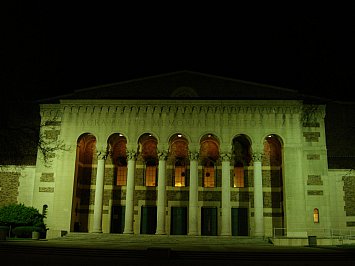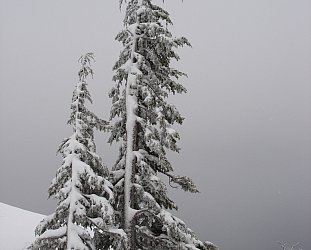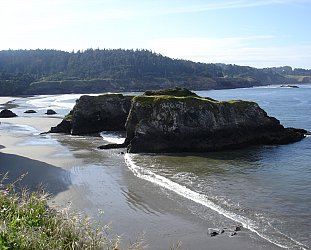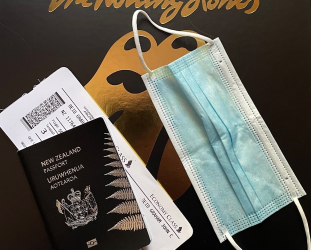Graham Reid | | 3 min read

In the few hours after dawn there is nothing here but ghosts. As sharp California light spreads across the empty streets of Old Sacramento the homeless who sleep under the nearby flyovers emerge, shaking their milkshake containers as they look for handouts.
But there is no one around yet to bum coins off, just other ghosts pushing supermarket trolleys of their belongings and rummaging through bins for bottles and butts.
Soon shopkeepers will open their chintzy stores for tourists to buy cheap souvenirs, western-style carvings, fridge magnets of cowboys, and bland Mexican food. Then later still there will be school groups and traffic, and those jostling toward the candy store where you buy flavoured sugar-rushes by the quarter pound.
“Sample all you like,” the man behind the counter, whose body shape suggests a lifetime of sedentary sampling, will say.
But that will all come later.
Old Sacramento -- a tourist quarter cut off from the suited city by freeways, flyovers and decades of urban development -- is a different place in the early morning.
Then you may see Sacramento as it once was if you look past the shuffling ghosts, and the signs advertising crystals, postcards and Lush toiletries.
You can more properly feel the width of the 19th century streets, and judge better how the ‘49ers, lured by the promise of gold, would have seen it. You may see where this city in the central plateau of California once kissed a welcome to riverboat gamblers, opportunists and the fortune-foolish who arrived along the Sacramento River.
The river flows thick brown and fast here -- big boats often floundered in its coiling eddies and were lost -- and the railhead lies silent in the flat morning light.
This is where the stillness of dawn allows you to hear the voices of ghosts long gone.
Sacramento -- the state capital despite the dominance of Los Angeles and nearby San Francisco -- is a sometimes shapeless city even though it boasts beautiful tree-lined streets and Victorian homes. Stand outside the impressive governor’s mansion in the suburbs, built in 1877 for a wealthy hardware merchant, and you have to mentally strip away the contemporary clatter which drowns out the old voices, and look beyond the suburban sprawl and the nearby Econo-lodge to get a feel for what a grand three-storey home this must have seemed to those who passed by on horseback or in carriages.
Here -- up until the Reagans -- was where California’s governors lived, rattling around inside the 16 rooms which have hand-crafted bronze door hinges and Italian marble fireplaces.
Sacramento is flat -- Californians, like Texans, had land to spare so spread out -- and it conspicuously lacks a centre. Faceless office blocks and multinational hotels punctuate the skyline, and around them you could be anywhere in anonymous downtown America.
But at Old Sacramento by the river in the early morning you may, only just, still feel a heart full of history and a city once rich in wild adventure.
The BF Hastings building on the corner of J and 2nd streets today houses the Wells Fargo History Museum, but its story embraces more than just those first tenants back in January 1854. It later became the Californian Supreme Court from where the first coast-to-coast telegraph message was sent. It went to Washington and assured President Abraham Lincoln that California would remain with the Union.
For eight months in 1861 it was also the office for the Pony Express, a name which -- like Wells Fargo -- evokes the mythology of the West.
The legend of the Pony Express riders -- young men who answered an ad which read, “Must be expert riders, willing to risk death daily. Orphans preferred” -- is burned in the imagination of anyone old enough to have been thrilled by cowboy serials at Saturday matinees, Hopalong Cassidy, and horsemen on an open plain.
Yet, like the cowboy, the Pony Express looms larger in mythology than it lasted in reality. Eighteen months after it started the overland telegraph was completed and so horsemen, who could make an average of 120 kilometres in a nine hour ride, were no longer required.
They too became ghosts, preserved in sepia-toned memory.
Across from the Hastings Building is a statue erected to the memory of the Pony Express riders. It is of a heroic young man on a rearing horse, his mouth agape, determination in his piercing eyes.
Behind him is the cutting edge of a freeway and, on this clear morning, I try to take an emblematic photograph of this monument to a brief, defining period in Sacramento’s life 150 years ago. But the freeway is there in every snap of the shutter: the new imposing itself on the old.
Behind me the wooden stores -- where once ne’er-do-wells socked back shots of Redeye -- are opening to sell trinkets to tourists in trainers. The air is warm but full of the scent of something lost. The outlaws and the West have been tamed, and the old saloons now sell candy by the bucketload.
Then, from out of the shadows behind the frozen rider, the figure of a powerful man emerges. He is in his late 50s, his thick blonde hair pulled back and hanging in greasy strands to his shoulders, his beard is full and tobacco stained, his pale blue eyes striking.
In a previous lifetime he might have helmed a stagecoach across the dry plains or through the Indian Nation, he might have ridden for the Pony Express when he had been young and daring and fearless.
But he emerges, nameless, from the underpass. He holds an empty milkshake container.
Just another morning ghost of Sacramento.
For other travel stories by Graham Reid, see here for his two award-winning travel books.







post a comment